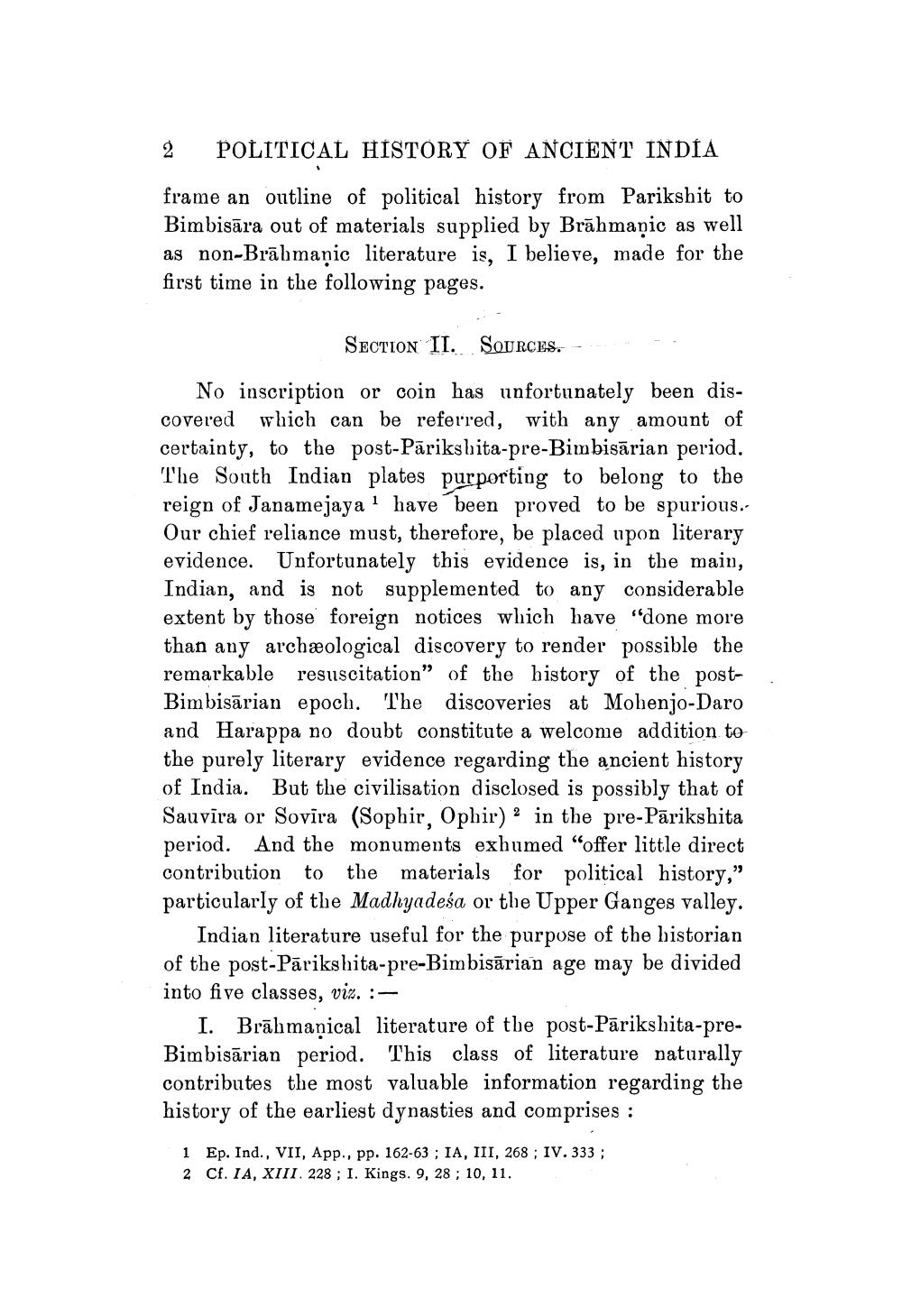________________
2 POLITICAL HISTORY OF ANCIENT INDIA frame an outline of political history from Parikshit to Bimbisāra out of materials supplied by Brāhmaṇic as well as non-Brāhmaṇic literature is, I believe, made for the first time in the following pages.
Section II. Sources.
No inscription or coin has unfortunately been discovered which can be referred, with any amount of certainty, to the post-Parikshita-pre-Bimbisārian period. The South Indian plates purporting to belong to the reign of Janamejaya' have been proved to be spurious.. Our chief reliance must, therefore, be placed upon literary evidence. Unfortunately this evidence is, in the main, Indian, and is not supplemented to any considerable extent by those foreign notices which have "done more than any archæological discovery to render possible the remarkable resuscitation” of the history of the postBimbisārian epoch. The discoveries at Mohenjo-Daro and Harappa no doubt constitute a welcome addition to the purely literary evidence regarding the ancient history of India. But the civilisation disclosed is possibly that of Sauvīra or Sovira (Sophir, Ophir) 2 in the pre-Parikshita period. And the monuments exhumed "offer little direct contribution to the materials for political history," particularly of the Madhyadeśa or the Upper Ganges valley.
Indian literature useful for the purpose of the historian of the post-Pārikshita-pre-Bimbisārian age may be divided into five classes, viz. :
I. Brāhmaṇical literature of the post-Parikshita-preBimbisārian period. This class of literature naturally contributes the most valuable information regarding the history of the earliest dynasties and comprises :
1 Ep. Ind., VII, App., pp. 162-63 ; IA, III, 268 ; IV. 333 ; 2 Cf. IA, XIII. 228 ; 1. Kings. 9, 28; 10, 11.




